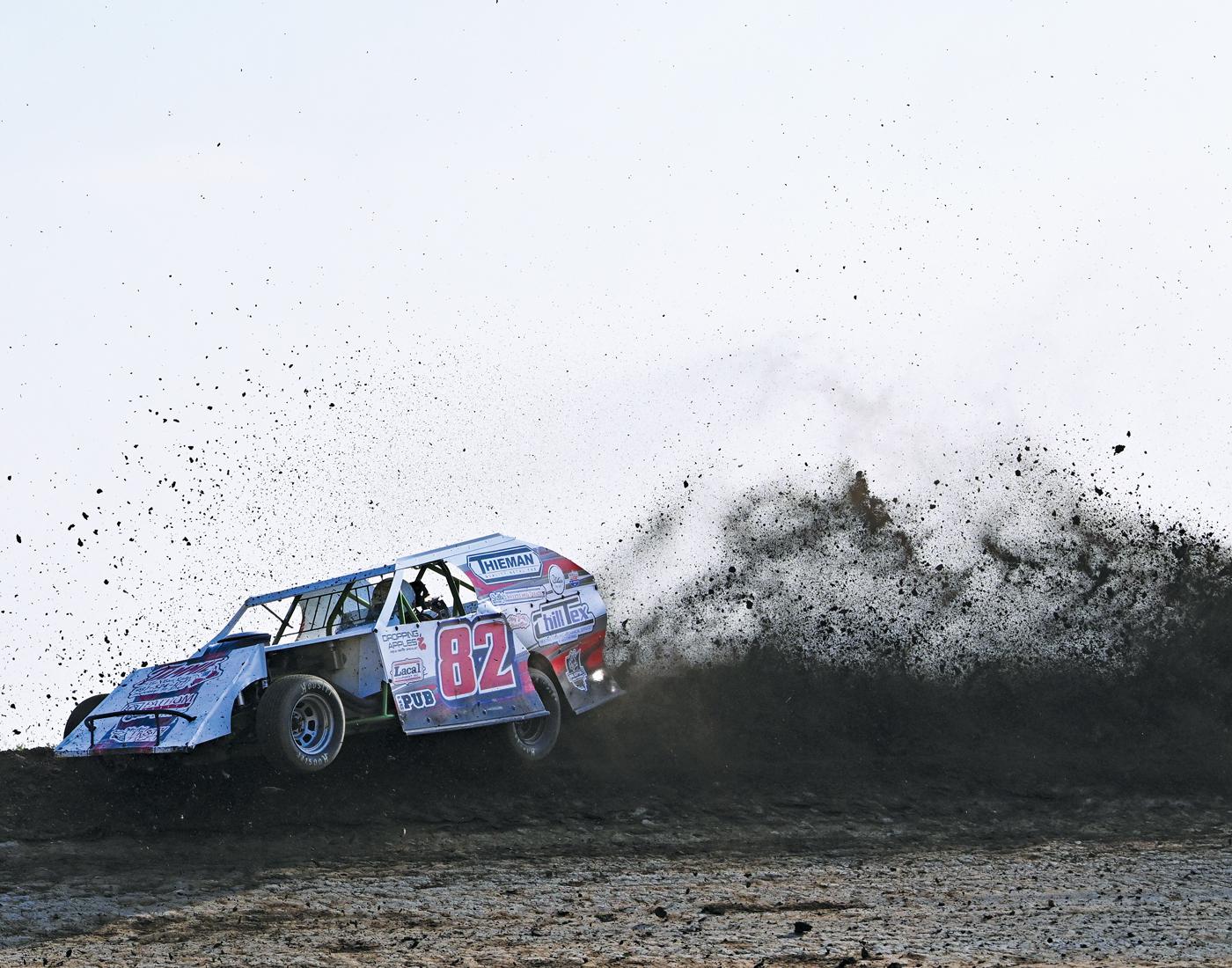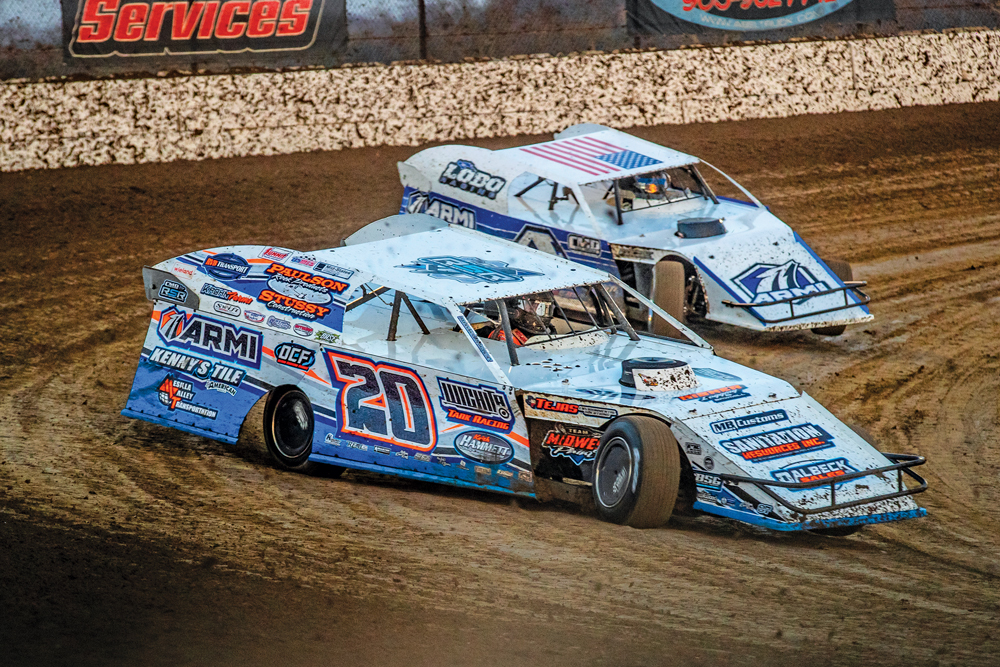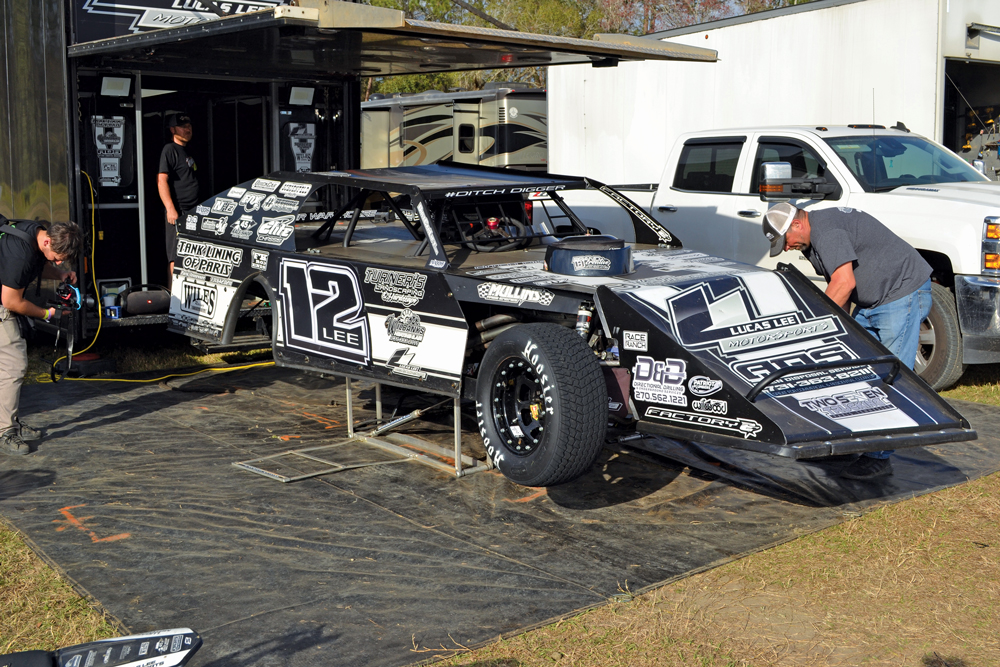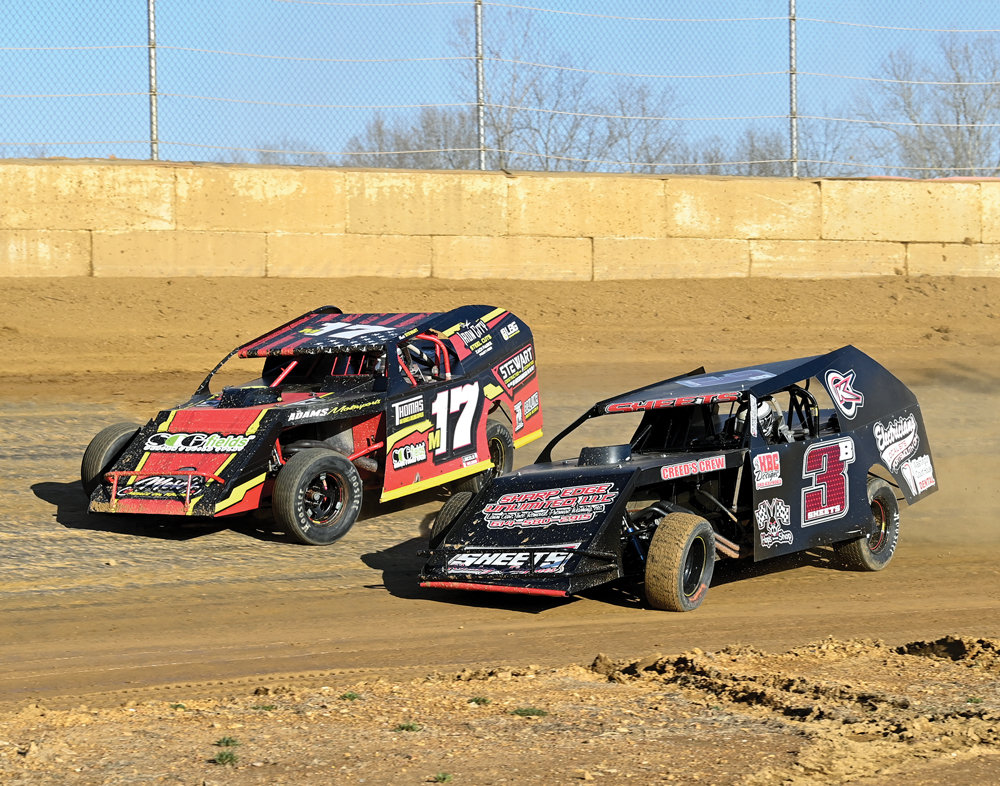Dirt Drifters

Dirt modified racing has enjoyed consistent growth in recent years. Now the challenge is to keep it going on the road ahead.
Thanks to an ongoing rise in both car counts and fan interest over recent seasons, dirt modified has emerged as something of a template for circle track racing organizers who’re looking to effectively balance the needs and expectations of teams with those of sponsors and audiences. While the segment has faced concerns about the cost increases that are currently affecting virtually all aspects of motorsports, it has largely managed to keep an even keel through the storm. But as Jeff Nun of the United States Modified Touring Series (USMTS) in Webster City, Iowa, pointed out, that success story isn’t entirely a product of careful rulebook tweaks.
“The fans dictate the direction that things go, but this is also a passionate group of racers,” he said. “I’ve had many drivers tell me over the years that they’d race in a ditch somewhere if that’s what they had to do in order to compete.”

Although interest remains high, there are some developments in the segment that are encouraging organizers to take a closer look at their operating strategies, scrutiny that has the potential to affect everything from car setup to race schedules.
Walking The Tightrope
As evidenced by the developments seen throughout the post-pandemic economy, cost increases are certainly not exclusive to dirt modified racing—or even motorsports as a whole. This trend has brought a whole host of challenges along with it; and as is currently the case in many racing segments, dirt modified organizers are saddled with the unenviable task of trying to keep competition safe and economically viable for their teams without stifling potential innovation or alienating a portion of their racers and fans as a result.
“Things have been fairly smooth over the past five years or so. There haven’t been any drastic changes to the bodies or anything like that,” said Jeff Ahlum of Grandview Speedway, Bechtelsville, Pennsylvania. “But suspension has been a bit of a hot-button topic as of late, and that’s because a couple of guys did some experimenting that was kind of inspired by what some folks are doing in late models. Nobody really said much about it until these guys started becoming successful with it, and then everybody jumped on the bandwagon. When those types of changes start to become popular, that’s typically when you start to see issues.”
Problems that cropped up along the way as a result of these changes ultimately convinced the track’s organizers to outlaw left-side panhard bars starting in the 2025 season, Ahlum explained.
“We had to take the bull by the horns here, but we also wanted to give teams some time to make the adjustment,” he said. “That panhard bar allows the car to rotate to the right rear, in sort of the way that late models do, but it requires a change in frame in order to implement that panhard bar. The issues that Grandview has seen are mainly related to safety. We noticed when the cars were rotating so drastically, it was causing a large increase in driveshaft yoke failures. When you have the driver sitting in the center of the car, the potential for injury is a big concern. The driver is protected by that hoop, but if we can do things to prevent those failures from happening to begin with, it only makes sense to do so.”

As noted by Bill Engelstad of WISSOTA in St. Cloud, Minnesota, some innovations, when left unchecked, can end up discouraging teams and hamper car counts in turn. “With the way the industry is right now, it’s very costly to race these cars,” he said. “Our total numbers are still good, but we’re losing the number of cars that are at race tracks. Racers are getting more selective about the events they’re doing because the tracks are having a tough time paying the racers what they’re worth. So instead of racing two or three nights a week, maybe they’re racing one night a week.”
Engelstad said that shock packages in particular have become a major source of cost concerns for organizers, which led WISSOTA to increase rule specificity in turn.
“It’s just crazy what some of these shock packages cost today, so we’ve worked hard to address that,” he continued. “For example, there are three-way and four-way clicker shocks out there now, but we only allow two-way, and we specify the shaft size. When you have a specific shaft size, it limits the number of tricks that you can fit into the shock. And with anything you run—even coilovers—you have to run a 4.5-inch OD coil spring with us. You can’t, for instance, use the little one that you see on the late model stuff.”
Dave Brenn of IMCA in Vinton, Iowa, told us that it can be difficult to enforce shock rules as the technology continues to evolve, so they tend to rely on other tactics to keep everything in check. “Taking shocks apart would be a can of worms in and of itself, so we still rely on simple mechanical rules. We don’t allow bump stops, the driver has to be able to compress the shock by hand after the race, and to this day we also have a shock claim. If a racer feels like the shocks on the car in front of him are outside of what he thinks the class should be, he can still claim shocks. Like engine claims, that can get a bit contentious, but it’s one of the few aspects that racers have control of at the race track. Cost is part of the issue, and so is competitive parity. We want the racing to be close because that affects the show.”
Brenn said race results have proven that sophisticated technology doesn’t automatically equate to a dramatic competitive advantage, either. “The shock packages can be expensive, but they don’t have to be. We go to our races all over the country, and we see race-winning cars every day. You can certainly buy some really fancy stuff that might still be legal, but a lot of folks are still winning races on a typical gas shock. Just because the guy in front of you has something doesn’t mean you have to have that to be competitive. I’ve always said that cars don’t win races—people win races. And it’s not just about being the best driver, it’s also about understanding how to set up the car for the conditions.”
Aero, however, is another story. “That’s a never-ending chase,” he added. “We play it pretty tight here. There’s a common saying that ‘air is free.’ But what you do to use the air is not. So we are very specific about the aero package, because even small things can make a difference. And we say ‘no’ a lot.”
Staying On Pace
As expenses have continued to mount, Engelstad said that the disparity between running costs and prize purses has caused a shift away from weekly races toward special high-dollar events, and he expects that trend to continue going forward.
“The purses are certainly a common topic of discussion these days,” he explained. “A weekly show typically offers $800 or $900 to win, while a special could pay $3,000 or more. Down the road I think it’s going to affect the weekly events, and sooner or later, we’re probably going to be in a situation where we’re just doing specials. But as soon as you do that, you limit the number of races that you can have, so it’s a bit of a double-edged sword.”

Engelstad also cited disparities in rulesets as another pain point that’s currently affecting both racers and organizers. “If you look at late model stuff like Lucas Oil and World of Outlaws, they’re the same cars,” he said. “And aside from some engine rules, our late model car is the same as well. But it’s not that way in dirt modified. For example, we have one set of rules for the bodies, while another sanctioning body might have another set, and another sanctioning body has their own set. I think this shift away from the weekly races toward these special events has contributed to some of that. Regardless, I would definitely like to see greater collaboration between the organizations so that the cars are basically the same across the board. It would certainly make it easier for these racers to run with multiple organizations.”
The issue is also compounded by the fact that organizers are continually playing a game of whack-a-mole as teams seek out new methods of outwitting their fellow competitors.
“Fortunately, we haven’t found anyone cheating with tires in our series, but tire doping is kind of a big story right now,” Nun said. “From what I understand, it’s something that has come over from karting; folks are soaking tires in chemicals before races to enhance grip. Part of the problem is cost, but also these are hardcore, caustic chemicals that you shouldn’t be breathing. The theoretical benefit is circumstantial at best—a stickier tire isn’t necessarily going to do you any good if the track is already sticky.”
Ahlum said that while Grandview Speedway is always willing to try new things to attract more fans, organizers tend to be hesitant about making big changes when a strategy is already yielding desirable results. But he did cite a particular aspect of dirt modified racing that might benefit from greater awareness.
“When you’re seeing some success, there’s kind of a mentality of, ‘If it ain’t broke, don’t fix it.’ But we also want to keep it interesting and do more where we can, so we’ve added things like the fan appreciation $10 night, which was immediately very popular when we added it last year, so it’s back again for this year,” he said. “Some of the traveling series bring their own spin on things as well. Also, one thing that dirt modified really has going for it that kind of separates it from late models and sprint cars is that, as long as the technical aspects of it are kept under control, modifieds are able to do a lot of passing. On weekly races you can still handicap, which forces the faster guys to race their way to the front. I think that’s the sort of thing that folks in modified racing should market more. It’s part of what makes this segment so exciting.”

Meanwhile, Nun said that while a strong social media presence is practically obligatory these days, a routinely updated website is also crucial. “The only thing worse than not having a website is having a website that’s never updated. People come to our sites because they know there’s always ever-changing information on them.”
Brenn noted that streaming can serve not only as a way to further connect with fans, but also as a means of bolstering cash flow. “The race tracks have their own marketing strategies, but we do a lot of promotion on events and weekly shows as well. And we have IMCA.tv; we’ve partnered with some really good people for that. It has provided us with a platform to reach more fans, which also pays back to race tracks and competitors, contributes to points funds, and other things.”
Nun said that while there’s an inherent limit to how much power these cars can effectively use, teams are continually on the hunt for a way to gain an advantage, and that also has a way of keeping things interesting.
“All of the bars, birdcages, and wild setups are about making more traction on that right-rear. We just try to keep an eye on what’s going on, and if a performance enhancement is suddenly going to cost the next guy $40,000 to have it, that’s something we generally have to crack down on.” Racers, Nun said, are “always looking for ways to get more aerodynamics out of the bodies, and limiting the amount of damage that comes with contact. So we have to monitor that stuff. The goal for us is to keep them fast and make them safer as we go.”
SOURCES
Grandview Speedway
grandviewspeedway.com
IMCA
imca.com
USMTS
usmts.com
WISSOTA
wissota.org
 MEMBERSHIP LOGIN
MEMBERSHIP LOGIN JOIN PRI
JOIN PRI


